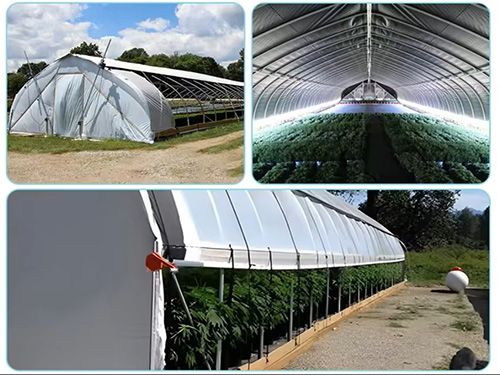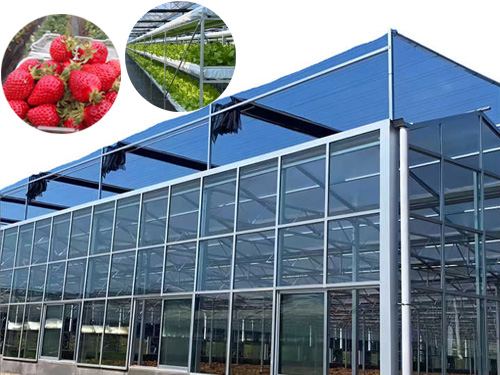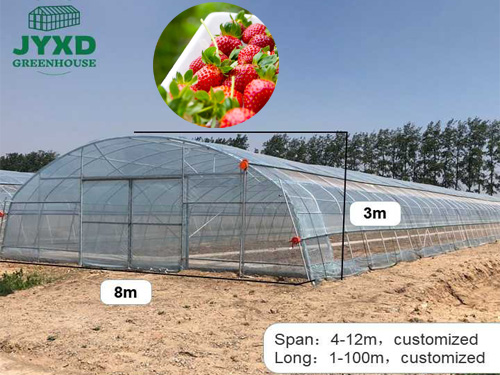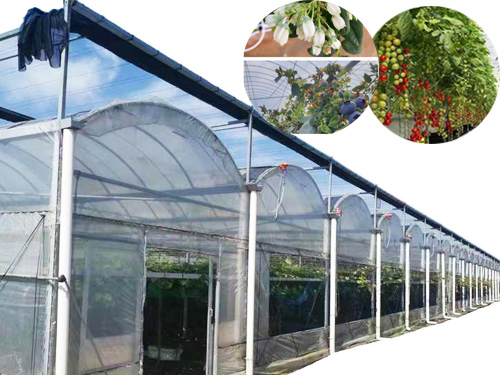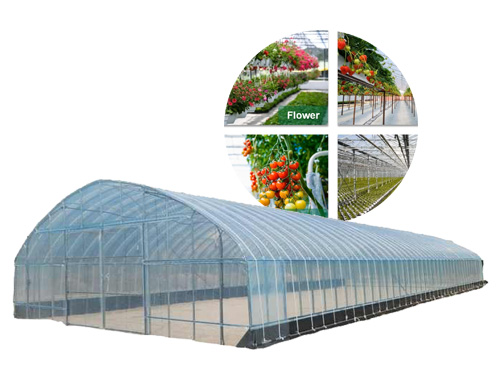NEWS DETAILS
NEWS INFORMATION
Seasonal Greenhouse Climate Control: Adapting Planting Schedules to Regional Weather Patterns
AUTHOR:jyxd-greenhouse DATE:2025-03-30 14:47:25 HITS:174
Greenhouse cultivation offers the unique advantage of year-round growing, but seasonal weather changes still play a significant role in determining the success of your crops. By understanding regional weather patterns and adapting planting schedules accordingly, growers can optimize greenhouse climate control and maximize yields. This article explores how to align planting schedules with seasonal changes, ensuring efficient resource use and healthy plant growth.
Why Seasonal Climate Control Matters
Greenhouses provide a controlled environment, but external weather conditions—such as temperature, humidity, and sunlight—can still impact internal climate. Adapting planting schedules to regional weather patterns helps growers:
· Reduce energy costs by leveraging natural conditions.
· Minimize stress on plants by providing optimal growing conditions.
· Maximize yields by aligning crop growth cycles with favorable seasons.
· Prevent diseases and pests that thrive in specific weather conditions.
1. Understanding Regional Weather Patterns
Every region has distinct seasonal weather patterns that influence greenhouse climate. Key factors to consider include:
· Temperature: Seasonal temperature fluctuations affect heating and cooling needs.
· Sunlight: Daylight hours and intensity vary by season and location.
· Humidity: Rainfall and humidity levels can impact ventilation and irrigation requirements.
· Wind: strong winds may require additional structural protection for greenhouses.
How to Analyze Regional Weather:
· Use historical weather data to identify trends in your area.
· Consult local agricultural extension services for region-specific insights.
· Invest in weather monitoring tools to track real-time conditions.
2. Adapting Planting Schedules to Seasons
Aligning planting schedules with seasonal changes ensures that crops grow under optimal conditions. Here’s how to plan for each season:
Spring:
· Characteristics: Increasing daylight, moderate temperatures, and higher humidity.
· Recommended Crops: Leafy greens, herbs, and early-season vegetables like tomatoes and peppers.
· Climate Control Tips:
o Gradually reduce heating as temperatures rise.
o Increase ventilation to manage humidity levels.
o Use shade cloths to protect young plants from intense sunlight.
Summer:
· Characteristics: Long daylight hours, high temperatures, and potential for drought.
· Recommended Crops: Heat-tolerant crops like cucumbers, melons, and eggplants.
· Climate Control Tips:
o Use evaporative cooling systems or shade nets to reduce heat stress.
o Increase irrigation to compensate for higher evaporation rates.
o Ensure proper ventilation to prevent overheating.
Fall:
· Characteristics: Decreasing daylight, cooler temperatures, and variable humidity.
· Recommended Crops: Root vegetables, brassicas (e.g., broccoli, cauliflower), and late-season greens.
· Climate Control Tips:
o Gradually reintroduce heating systems as temperatures drop.
o Use row covers or thermal blankets to retain heat.
o Adjust irrigation to match lower evaporation rates.
Winter:
· Characteristics: Short daylight hours, low temperatures, and potential for frost.
· Recommended Crops: Cold-hardy crops like kale, spinach, and winter lettuce.
· Climate Control Tips:
o Use supplemental lighting to compensate for reduced sunlight.
o Insulate the greenhouse to retain heat and reduce energy costs.
o Monitor humidity to prevent condensation and fungal growth.
3. Tools for Seasonal Climate Control
Modern greenhouses can leverage advanced tools to adapt to seasonal changes effectively:
· Automated Climate Control Systems: Integrate heating, cooling, ventilation, and lighting controls for seamless adjustments.
· Weather Stations: Monitor external conditions to anticipate changes and adjust greenhouse settings accordingly.
· Shade Nets and Thermal Blankets: Regulate light and temperature based on seasonal needs.
· Supplemental Lighting: Use LED grow lights to extend daylight hours during winter.
4. Benefits of Seasonal Adaptation
Adapting planting schedules to regional weather patterns offers numerous advantages:
· Energy Efficiency: Reduce heating, cooling, and lighting costs by leveraging natural conditions.
· Higher Yields: Align crop growth cycles with optimal seasonal conditions for better results.
· Resource Optimization: Use water, fertilizers, and other inputs more efficiently.
· Disease Prevention: Minimize risks by avoiding weather conditions that promote pests and diseases.
5. Case Study: Seasonal Success in Different Regions
Cold Climate (Northern Europe):
· Challenge: Short growing season and low winter temperatures.
· Solution: Use insulated greenhouses with supplemental heating and lighting to grow cold-hardy crops year-round.
Hot Climate (Middle East):
· Challenge: Extreme heat and high evaporation rates.
· Solution: Implement evaporative cooling systems, shade nets, and drip irrigation to maintain optimal conditions.
Temperate Climate (North America):
· Challenge: Variable weather with distinct seasons.
· Solution: Rotate crops based on seasonal conditions and use automated climate control systems for precise adjustments.
Conclusion
Seasonal greenhouse climate control is essential for optimizing plant growth and resource efficiency. By understanding regional weather patterns and adapting planting schedules accordingly, growers can create a thriving greenhouse environment year-round. Leveraging advanced tools and technologies further enhances the ability to respond to seasonal changes, ensuring consistent yields and healthy crops.
For more expert tips and high-quality greenhouse equipment, visit our website and take your cultivation practices to the next level. Let’s grow smarter and cultivate a greener future together!
![]()
Meta Description: Learn how to adapt greenhouse planting schedules to regional weather patterns for optimal climate control. Discover seasonal strategies to maximize yields and reduce energy costs.
Hebei Juyou Xinda Greenhouse Facilities Co.,Ltd.
Copyright © 2024-2025 https://www.jyxd-greenhouse.com. All Rights Reserved Hebei Juyou Xinda Greenhouse Facilities Co.,Ltd.Copyright





 Current Location:
Current Location:


